The development of scientific research at the University of Macau (UM) since its founding is a mirror of technological advances in Macao over the past decade. Starting from scratch, generations of UM researchers have worked tirelessly to develop new technologies and transform them into products and services that improve people’s lives.
Commercialisation of Research Results
In recent years, UM researchers have been working with institutions and companies in the Guangdong‐Hong Kong‐Macao Greater Bay Area to commercialise their research results. Well‐developed research projects from UM, particularly those in the fields of smart city technology, microelectronics, and advanced materials, will be incubated at a centre for industry‐academia collaboration in Hengqin New Area established through the Zhuhai UM Science and Technology Research Institute.
At the Hengqin centre, a number of research results are being commercialised through local government and companies. These include ‘Virus Hunter’, a digital‐microfluidic‐chip‐based system for rapid virus detection; special hydrogels made of cement‐derived nanoparticles that can be used as intermediate raw materials to make water‐absorbing swelling agents and have the potential to be applied in farmland water retention and desert management; and ‘Golden Wound Dressing’, a product based on special sugar molecules from the bark of Eucommia Ulmoides (commonly known as hardy rubber tree) that can help damaged skin tissue regenerate. The ‘Golden Wound Dressing’ team has established a company under the guidance of UMTec Limited.
Some UM‐developed technologies have even found applications overseas. For example, during the 2020 COVID‐19 pandemic, the university and the Institute for the Development and Quality, Macau, donated ventilator prototypes to universities in Angola and Mozambique, to help medical professionals in these two countries treat respiratory diseases.
Starting from Scratch
For a university that started scientific research from scratch, these are hard‐won achievements. As UM Rector Yonghua Song points out: ‘Macao started relatively late in science and technology development, lagging behind in both quality and scale. However, UM has achieved pleasing results in various fields, including Chinese medical sciences, smart city technology, microelectronic chip design, internet of things, advanced materials, and precision medicine. ’
In 1989, the Teaching Committee of the University of East Asia, the predecessor of UM, established a Research Committee, signalling the official start of the university’s research work. In 1993, the university established a scientific research fund. In the same year, the Science and Technology Research Centre under the Faculty of Science and Technology became operational and launched 15 research and development plans. Although UM was still in its infancy in research development at the time, it was already actively working with other institutions on scientific research projects. In 1995, UM launched a series of research projects with Tsinghua University, Peking University, and research institutes under the Chinese Academy of Sciences. In the same year, a team led by Prof Rui Martins, a microelectronics expert and a vice rector of UM, developed the first chip, ‘UMChip’, using complementary metal‐oxide‐semiconductor technology, and launched it at an international seminar. It was a major breakthrough in the university’s research efforts.
By the time Macao returned to the motherland in 1999, UM had already developed the world’s first Chinese‐Portuguese electronic dictionary ‘PCT’, and a watt‐hour metre pulse converter. The latter earned UM a patent from China National Intellectual Property Administration in December of the same year, which is the university’s first‐ever patent. By the end of 2020, the number of patents held by UM had increased ten times to nearly 100, covering such fields as biomedicine, traditional Chinese medicine, computer science, electrical and electronics engineering, machinery, microelectronics, and microfluidics.
Rapid Development since the Handover
The rapid progress of scientific research at UM would not have been possible without the Macao government’s heavy investment in technological innovation after the city’s handover. In 2014, UM moved to the current campus on Hengqin Island. The improved scientific research environment and facilities on the new campus laid a solid new foundation for technology transfer.
In 2004, the Macao Special Administrative Region (SAR) government established the Science and Technology Development Fund. Over the years, the fund has supported a large number of scientific research projects from UM, many of which have great industrialisation potential. In 2011, the SAR government established three types of science and technology award, namely the Natural Science Award, the Technological Invention Award, and the Science and Technology Progress Award. In the first award ceremony held in 2012, UM won nine Science and Technology Awards and 19 Scientific and Technological R&D Awards for Postgraduates, eclipsing all other higher education institutions in Macao. Of the six recipients of the Technological Invention Award, which aims to recognise ‘individuals who use scientific and technological knowledge to invent new products, new technologies, or new processes with market value’, four were from UM. By the end of 2020, 20 out of the 28 Technological Invention Awards presented in the previous years were won by UM scholars, which shows the market potential of UM’s scientific research.
Microelectronics Research
The Analog and Mixed‐Signal VLSI Laboratory was established in 2003. When it was elevated to the status of a state key laboratory in 2010, it became Macao’s first state key laboratory in the eld of engineering, with UM Vice Rector Prof Rui Martins serving as its founding director. Today, the laboratory is a global leader in microelectronics research. At the 2019 International Solid‐State Circuits Conference, the number of chip‐related papers published by the laboratory ranked No 2 in the world, second only to Intel.
The microelectronics research team has created a notable record of ‘ firsts’ for UM. In 2001, UM participated in the founding of Chipidea, Macao’s first integrated circuit company and the predecessor of the current Synopsys. In 2009, a team led by Prof Mak Pui In, the current associate director of the university’s Institute of Microelectronics, obtained UM’s first patent from the United States for a project titled ‘Two‐Step Channel Selection for Wireless Transmitter Front‐Ends’. In 2011, Prof Mak, along with two other faculty members of the laboratory, namely Prof U Seng Pan and Prof Sin Sai Weng, received a second prize of the State Scientific and Technological Progress Award, for their project on the design and development of high‐performance analogue and mixed‐signal integrated circuit technology. It was the first time that researchers from Macao received this prestigious national award. The fact that the three recipients were all educated in Macao, and received doctoral degrees from UM, made the good news even more encouraging for the local scientific community.
In recent years, the microelectronics research team has established several companies to facilitate technology transfer. Digifuidic, a biotechnology company established in 2018, was the first company for this purpose, with UM scholars and alumni as the core members. After the novel coronavirus outbreak in 2020, the company used a UM‐patented technology to successfully develop a digital‐microfluidic‐chip‐based system called ‘Virus Hunter’, which can complete the virus detection process within 30 minutes.
Achievements in Chinese Medical Sciences
Chinese medical sciences is another research area in which UM has achieved impressive results. For instance, the university has developed many innovative drugs and health products, and has participated in the development of pharmacopoeial conventions for Chinese medicine in Europe and the United States, creating favourable conditions for Chinese medicine to enter the international market. In 2002, UM established the Institute of Chinese Medical Sciences (ICMS). With the joint e ort of a team of Chinese medicine scholars in Macao, led by Prof Wang Yitao, then director of ICMS, the State Key Laboratory of Quality Research in Chinese Medicine (SKL‐QRCM) was officially inaugurated in 2011 and became the first state key laboratory of Chinese medicine in China. In 2012, UM signed an agreement with the United States Pharmacopeial Convention for the establishment of a joint laboratory. It was the first time that the organisation collaborated with a higher education institution in establishing quality standards for Chinese medicine. So far, UM has completed more than ten Chinese medicine standards, including those in the US Pharmacopeia and the European Pharmacopeia.
UM has won numerous local, national, and international awards for its achievements in Chinese medicine research. In 2016, a research project using DNA barcoding technology to identify the species of medicinal plants, conducted by UM, Peking Union Medical College, and several other institutions, received a second prize of the State Scientific and Technological Progress Award. In 2019, two inventions developed by a group of researchers from the SKL‐QRCM—one is a series of innovative Chinese herbal products and the other is a zebra sh screening system based on microfluidic technology— won gold awards at the 47th International Exhibition of Inventions of Geneva. The former project included six products in two forms: solid‐liquid capsule form and granule form. It was the first time that a modern Chinese herbal product from Macao won this award.
In collaboration with Peking University’s State Key Laboratory of Natural and Biomimetic Drugs and the Traditional Chinese Medicine Science and Technology Industrial Park jointly established by Guangdong and Macao (the Industrial Park), UM has established a platform for the commercialisation of new technologies in Chinese medicine. Seizing the opportunities brought about by the rapid development of the Guangdong‐Hong Kong‐Macao Greater Bay Area, the university has actively promoted Chinese medicine research and development (R&D) in Hengqin by establishing a centre for industry‐academia collaboration in the area and working with the Industrial Park.UM also collaborates with well‐known pharmaceutical companies in the Greater Bay Area to promote R&D, registration, and industrialisation of granules based on classic formulas in traditional Chinese medicine, in order to promote the standardisation and internationalisation of Chinese medicine.
Achievements in Smart City Development and Internet of Things
In the field of internet of things for smart city development, UM has also made great progress. In 2010, a team of UM professors and mainland experts initiated a project titled ‘The Study of the Fundamental Theories and Design Methodologies on the Internet of Things’. The project was approved and funded by the Ministry of Science and Technology of China under the ‘973 Programme’ (also known as the National Basic Research Programme). In 2018, UM received approval from the Ministry of Science and Technology to establish the State Key Laboratory of Internet of Things for Smart City. The laboratory is headed by Prof Yonghua Song, current rector of UM and an internationally renowned expert in power systems.
Since its establishment, the laboratory of internet of things has carried out a series of research projects that aim to address some of the pressing needs of Macao. One of the projects is titled ‘Key Technologies and Platforms for Collaborative Intelligence‐driven Autonomous Vehicles’, which was jointly conducted with companies and institutions outside the university. The project bore fruit in 2020, with the first autonomous bus in Macao becoming operational on UM’s campus on a trial basis. During this period, data will be collected for analysis in preparation for future testing on public roads in Macao. ‘Developing autonomous vehicle technologies has become a global trend,’ says Prof Song. ‘UM will write a new chapter in public transport for smart city development in Macao and the Greater Bay Area by commercialising key research results that are impactful and innovative.’
Perfecting Intellectual Property Management and Supporting Tech Startups
A key step to transforming research results into useful products and services is establishing a sound intellectual property management system. In 2018, UM established the Research Services and Knowledge Transfer Office. In addition, UM has a wholly‐owned subsidiary, UMTec Limited, which was restructured in 2019, to take care of the management and commercialisation of the university’s intellectual property.
UM also supports research‐based startups. In 2017, the university established the Centre for Innovation and Entrepreneurship (CIE). In 2018, the centre welcomed the first batch of entrepreneurial teams, most of which were in the process of commercialising the university’s research results. In early 2019, with the support of the University of Macau Development Foundation, CIE awarded initial funds to the first 20 entrepreneurial teams incubated in the centre, two of which deserve special mention. One is led by Prof Xu Renhe in the Faculty of Health Sciences (FHS) and has developed a technology that enables storage of stem cells at room temperature. The other, led by Prof Poon Chuen Wai in the same faculty, works on a series of innovative protein molecule detection products and services for clinical and research applications. The two teams have won numerous awards at regional and international competitions for their projects, and have even been approached by interested investors. Currently, they are discussing the possibility of collaboration with medical institutions in the Greater Bay Area.
Other notable examples of successful incubation through CIE include two teams, led by Prof Hui Kwun Nam in the Institute of Applied Physics and Materials Engineering, and Prof Liu Tzu‐Ming in FHS, respectively. With CIE’s support, Prof Hui, along with some postgraduate students and alumni, established Olaite Energy Technology Company Limited (Companhia de Tecnologia de Energia Olaite, Limitada), which specialises in developing safer and environmentally friendly batteries with a higher energy density. The other company, co‐founded by Prof Liu Tzu‐Ming and his team, is named ‘Catydid’. The company has developed a blood uorometre that allows medical professionals to measure the uorescence in the blood samples to help detect serious illnesses, such as sepsis, shock, kidney failure, and heart failure, at an early stage. Prof Liu hopes to build one or two prototypes in 2021, and then proceed to technology transfer in the industrial park in Hengqin after the safety of the machine has been assessed in clinical trials.
New Research Blueprint
UM attaches great importance to academic research and technological innovation, and has made significant contributions to the fields of science and humanities. According to statistics from the ISI Web of Science, the number of UM papers published in prestigious scientific journals increased from 77 in 2007 to 2,025 in 2020, with more than 42,292 citations in 2020.
The university has formulated a ‘3+3+3+3’ strategic research blueprint to encourage interdisciplinary collaboration. Under this new blueprint, some research results at UM already show great promise for industrialisation. Currently, Macao’s industrial structure is in urgent need of transformation and upgrading, which makes scientific and technological development ever more important. As the only comprehensive public university in Macao, UM is committed to transforming scientific and technological progress into increased productivity in order to promote economic diversification in the city.
Source: UMagazine Issue 23
All articles in Set Sail for New Horizons on the 40th Anniversary:
Providing various services to society
Developing an international faculty team
Milestones of the University of Macau
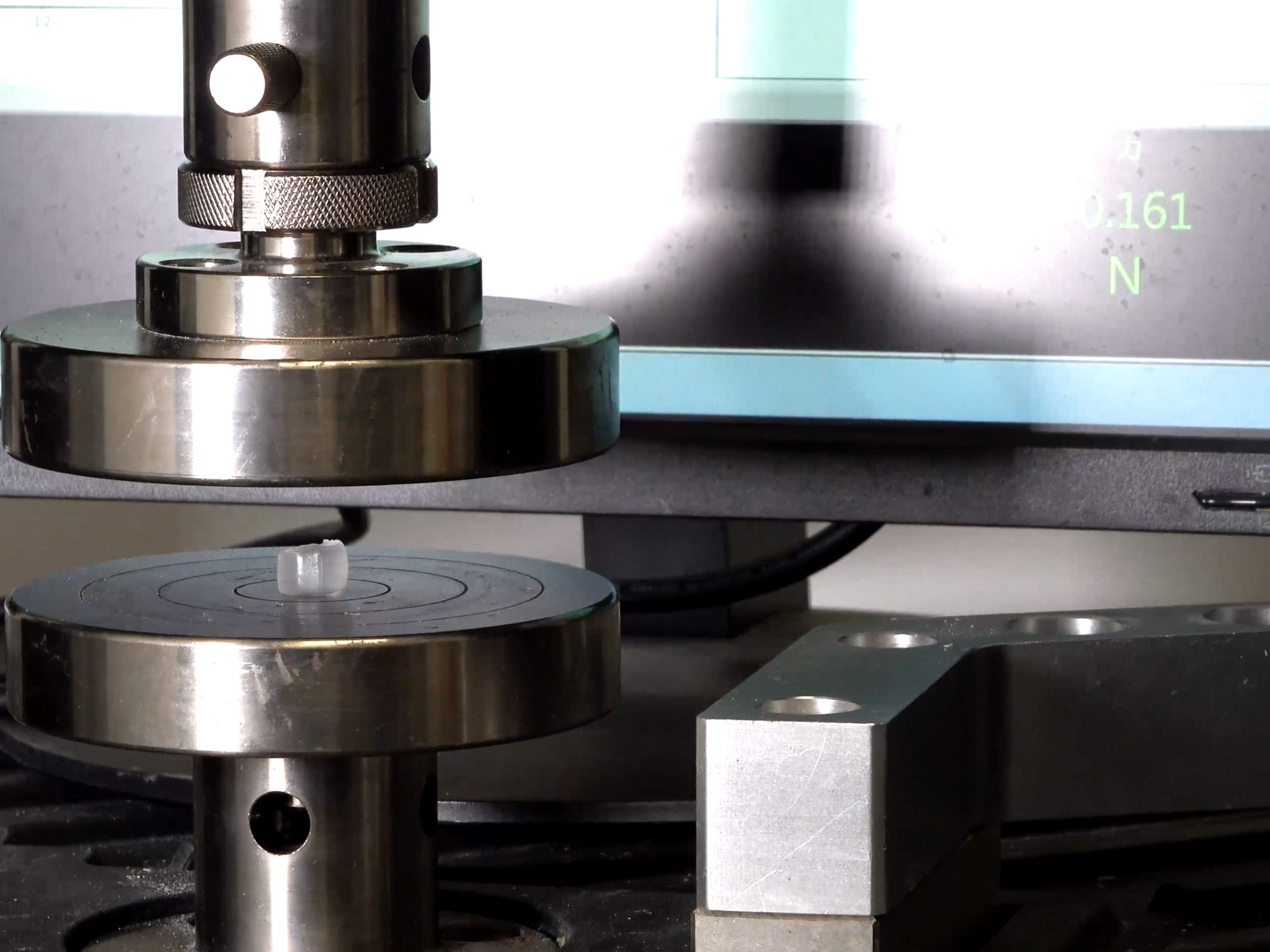
Special hydrogels can be used as intermediate raw materials to make water‐absorbing swelling agents
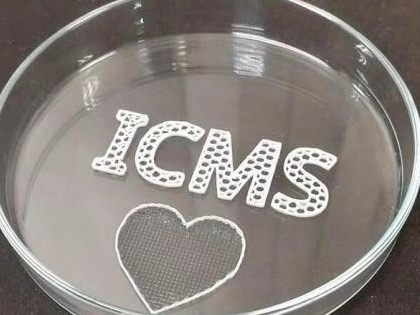
3D‐printed wound dressing that contains sugar molecules derived from the hardy rubber tree
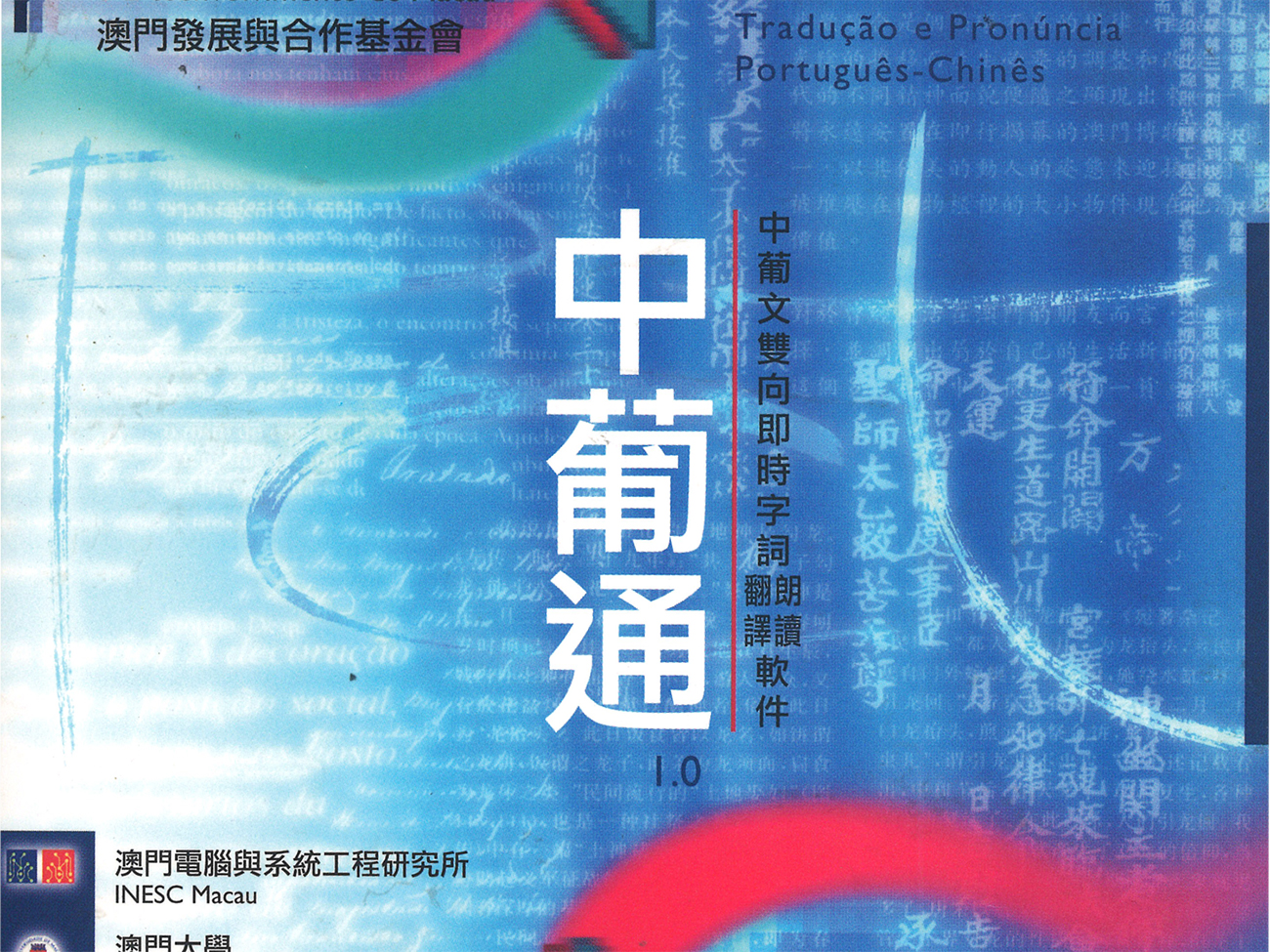
PCT, the world’s first Chinese‐Portuguese electronic dictionary
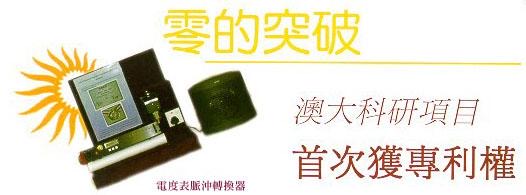
UM received its first patent in 1999 for the watt-hour metre pulse converter
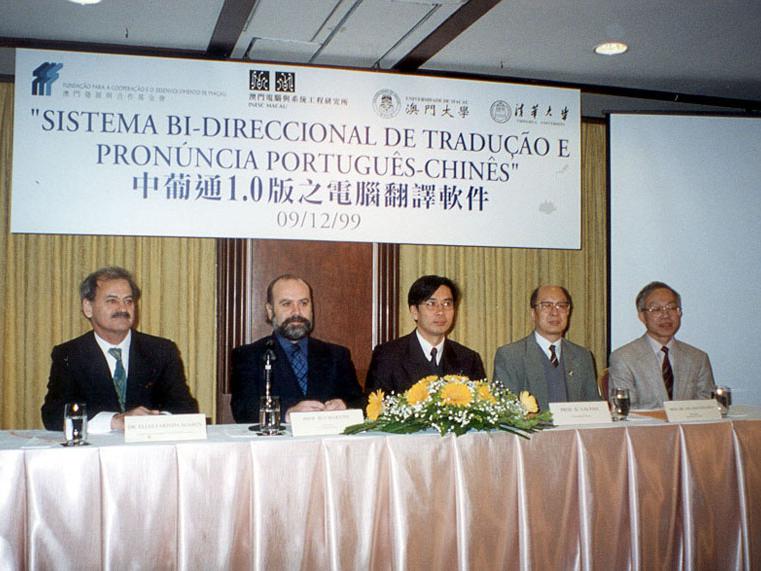
In 1999, UM launches PCT, the world’s first Chinese‐Portuguese bilingual audio dictionary.
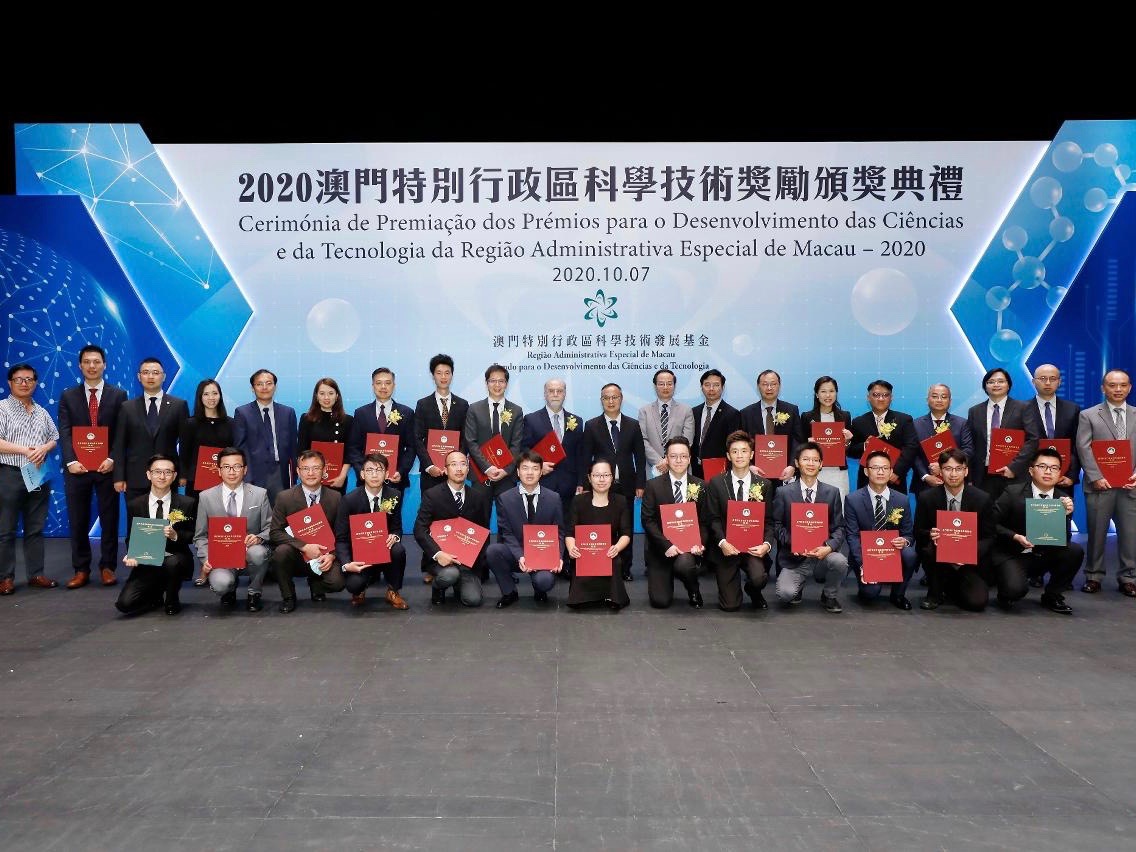
UM wins nearly 70 per cent of the Macao Science and Technology Awards in 2020
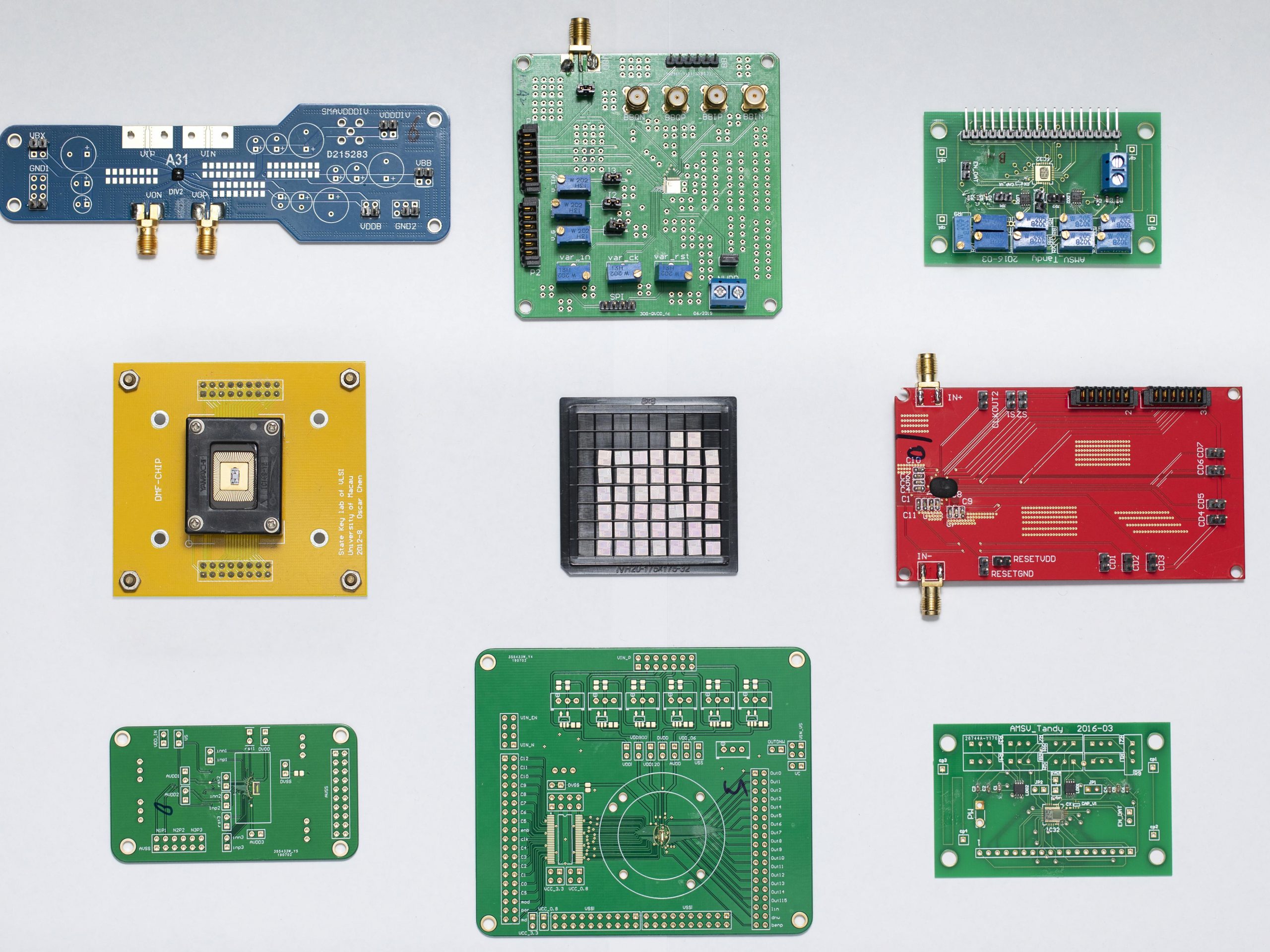
Different versions of UMChips
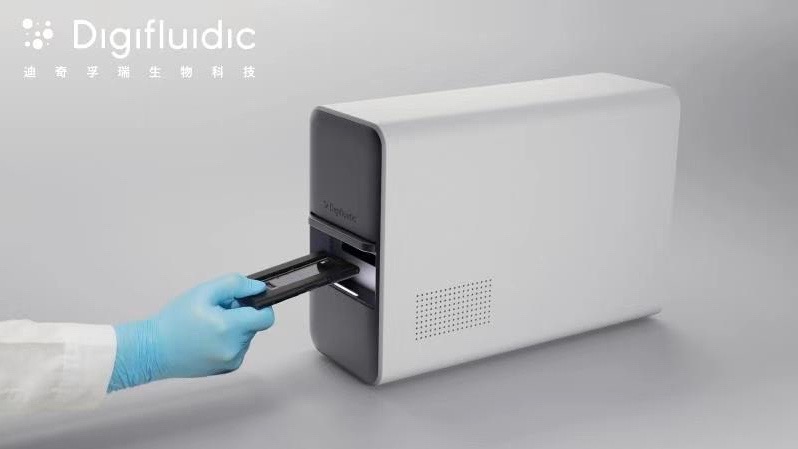
Virus Hunter, a digital‐microfluidic‐chip‐based system for rapid virus detection
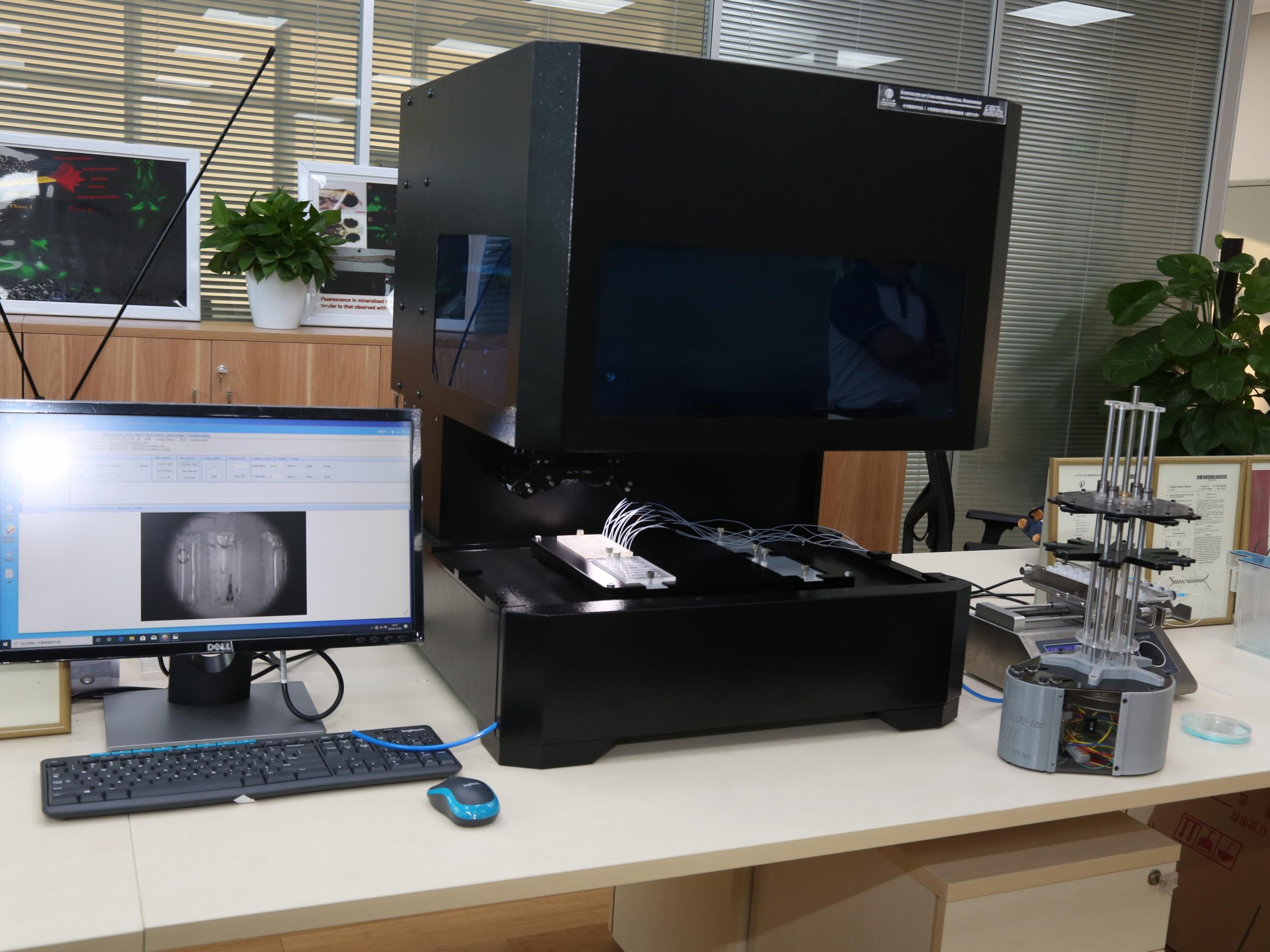
A zebrafish screening system based on microfluidic technology
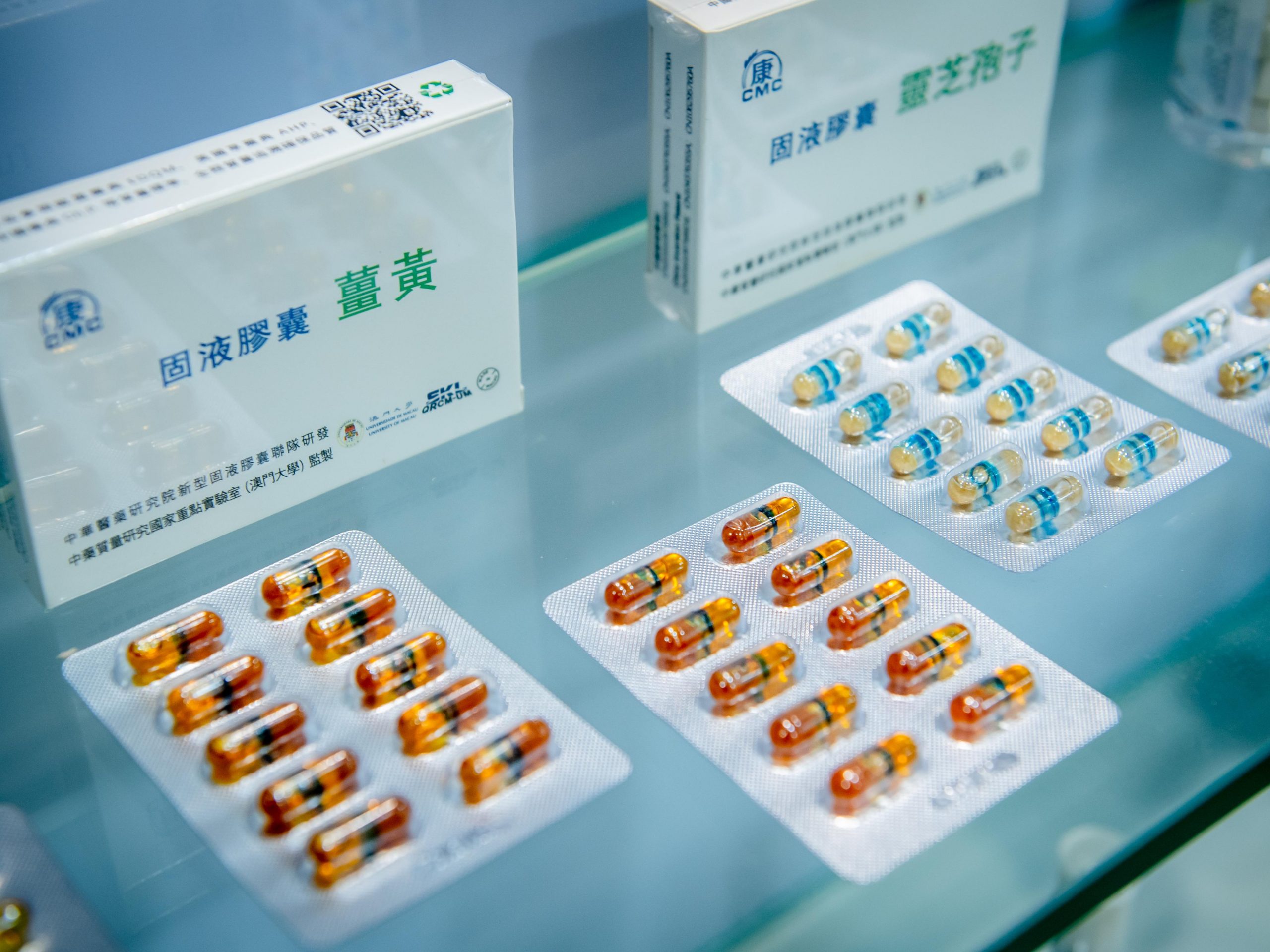
UM has completed more than ten Chinese medicine standards, including those in the US Pharmacopeia and the European Pharmacopeia.
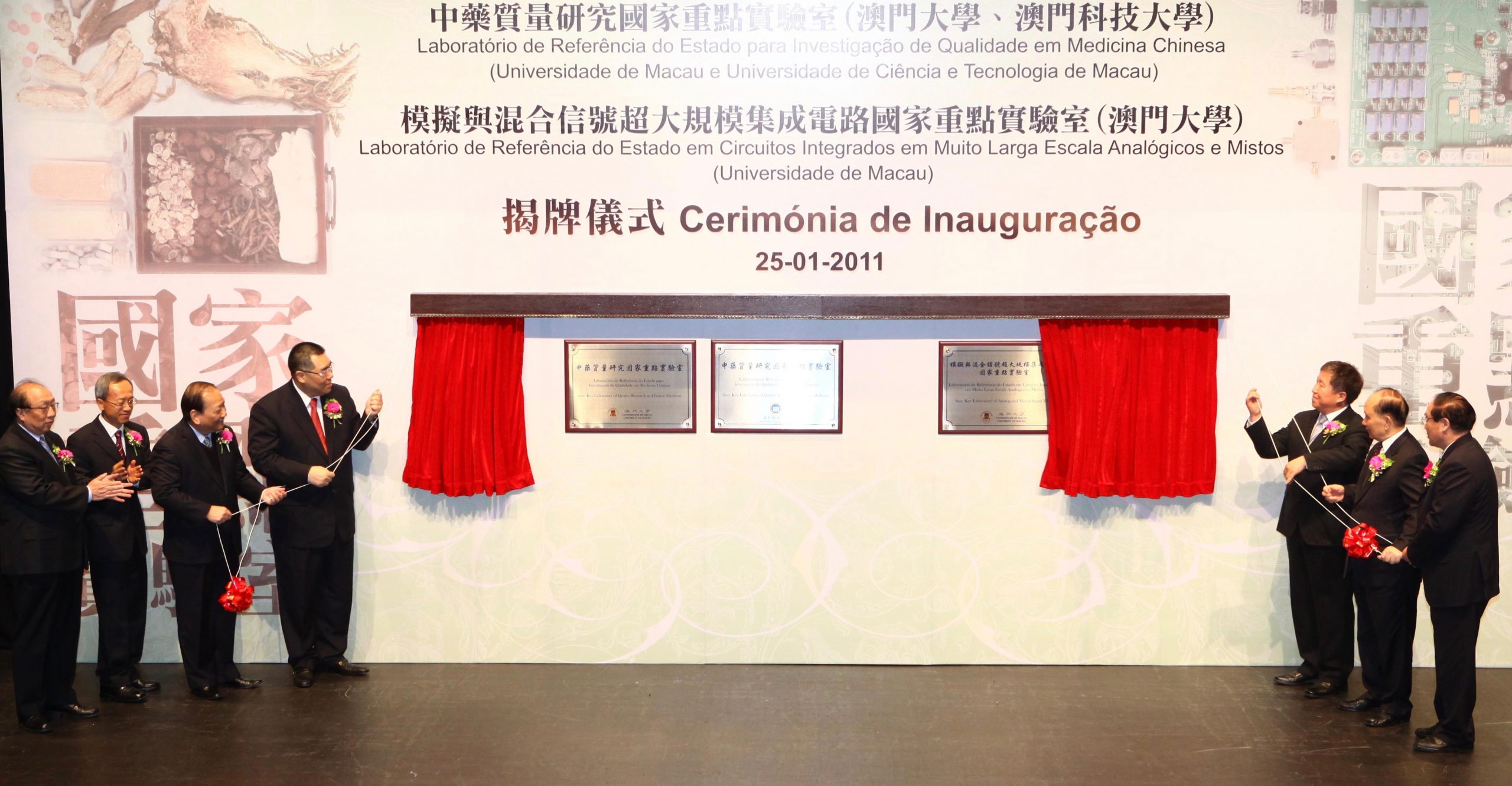
In 2011, UM receives approval from the central government to establish two state key laboratories, namely the State Key Laboratory of Analog and Mixed‐Signal VLSI, and the State Ke
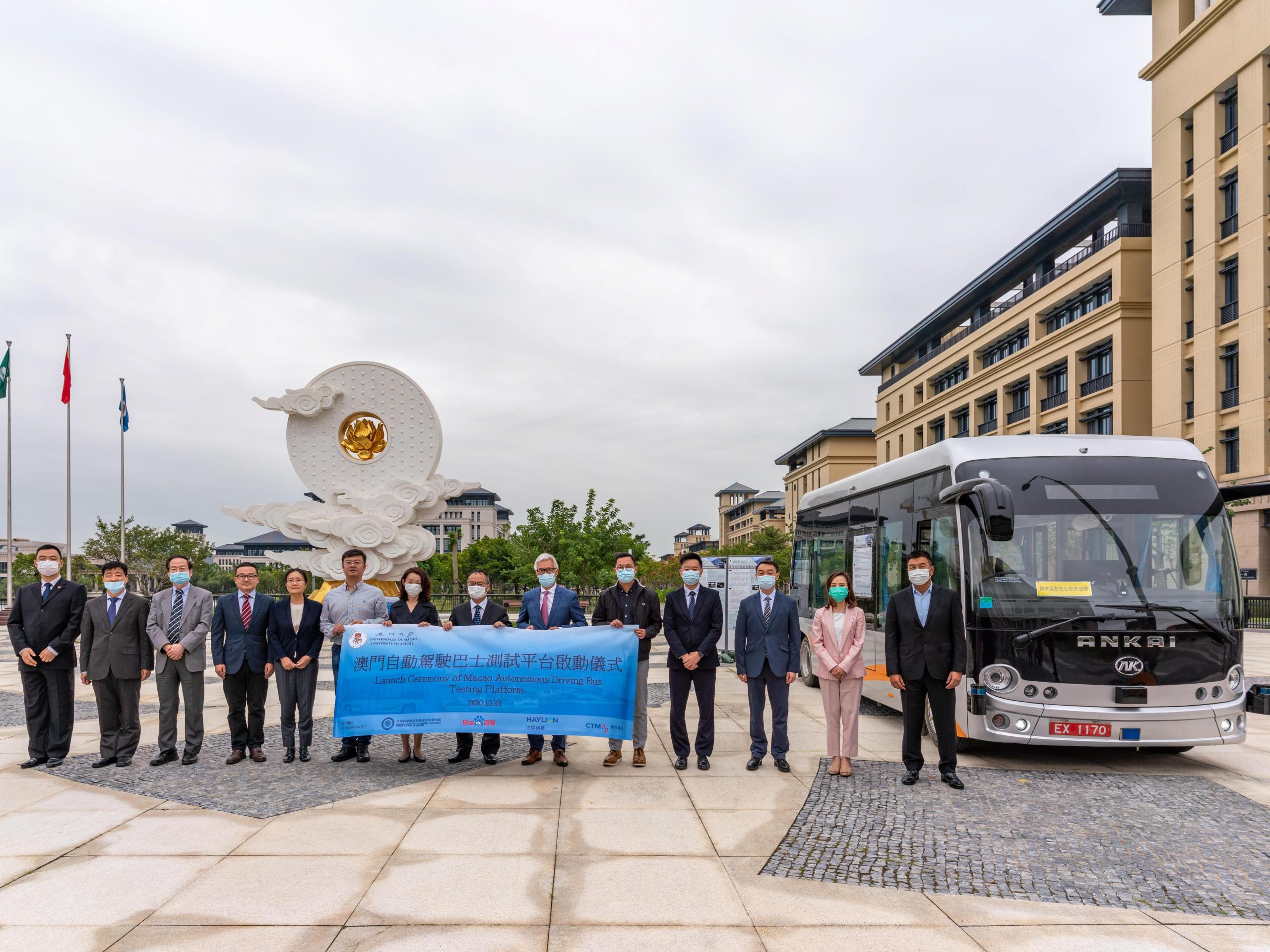
Macao’s first autonomous bus becomes operational on the UM campus
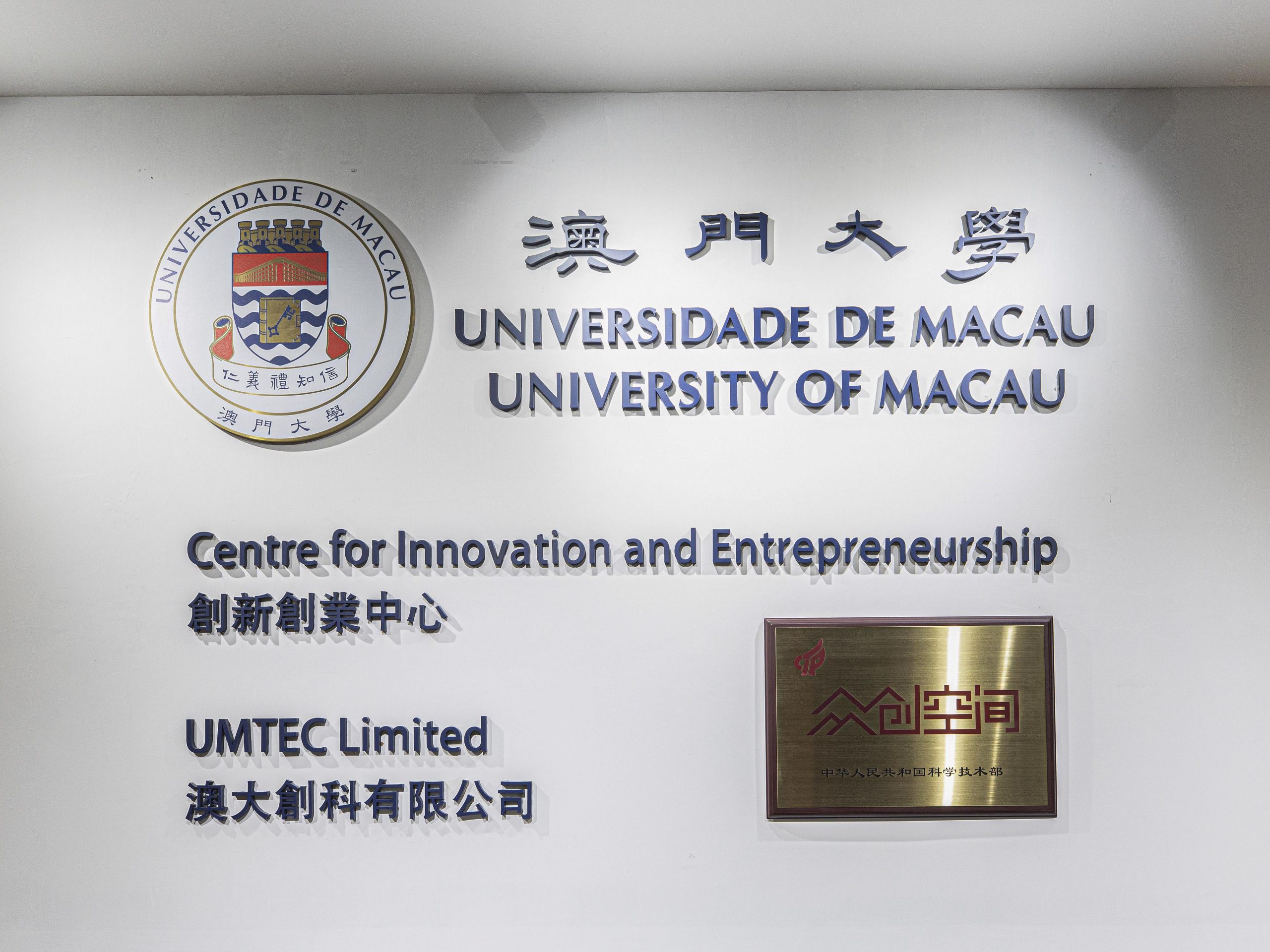
The Centre for Innovation and Entrepreneurship receives approval to join China’s national system of co‐working space
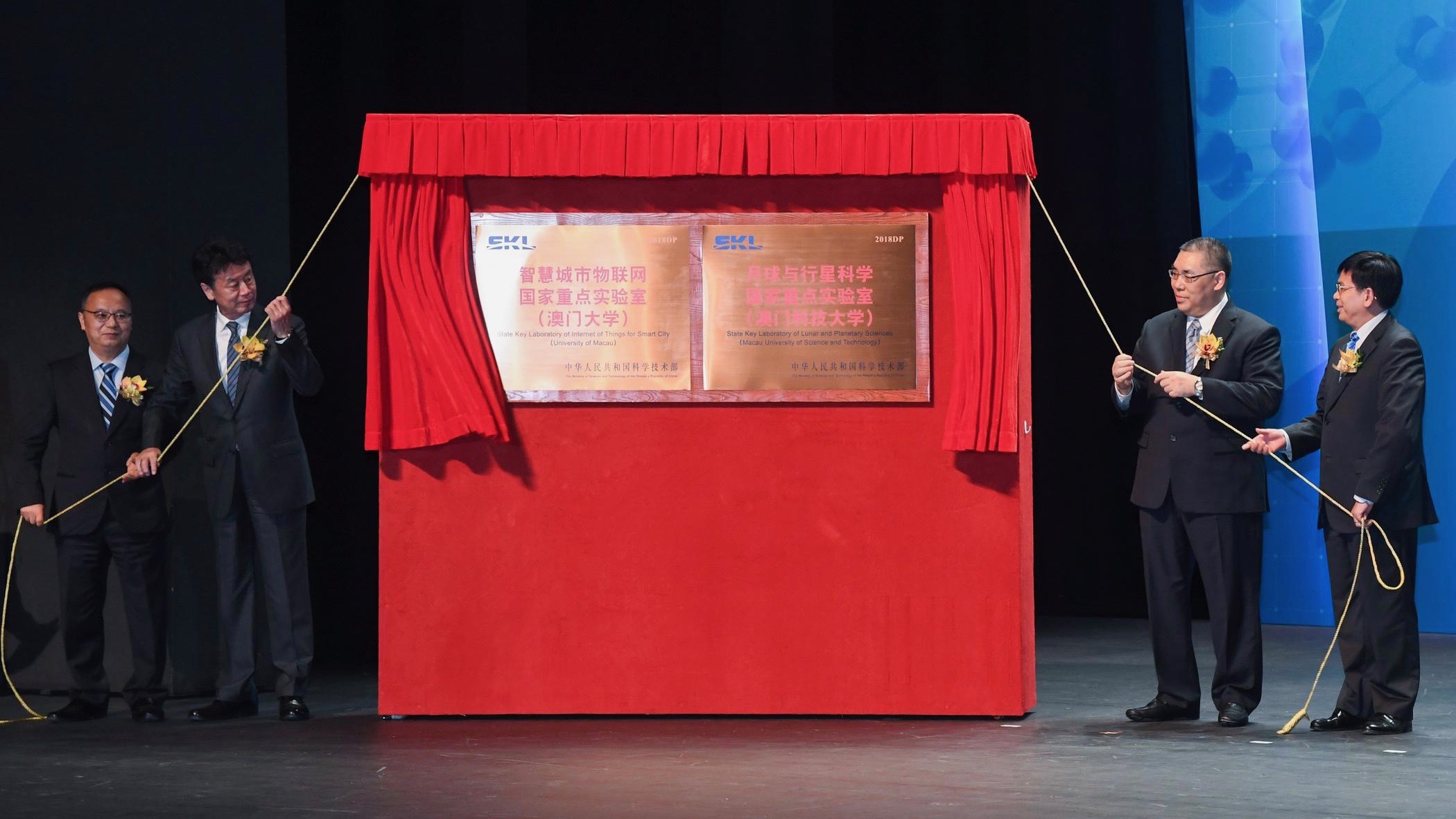
In 2018, UM receives approval from the central government to establish its third state key laboratory, namely the State Key Laboratory of Internet of Things for Smart City.
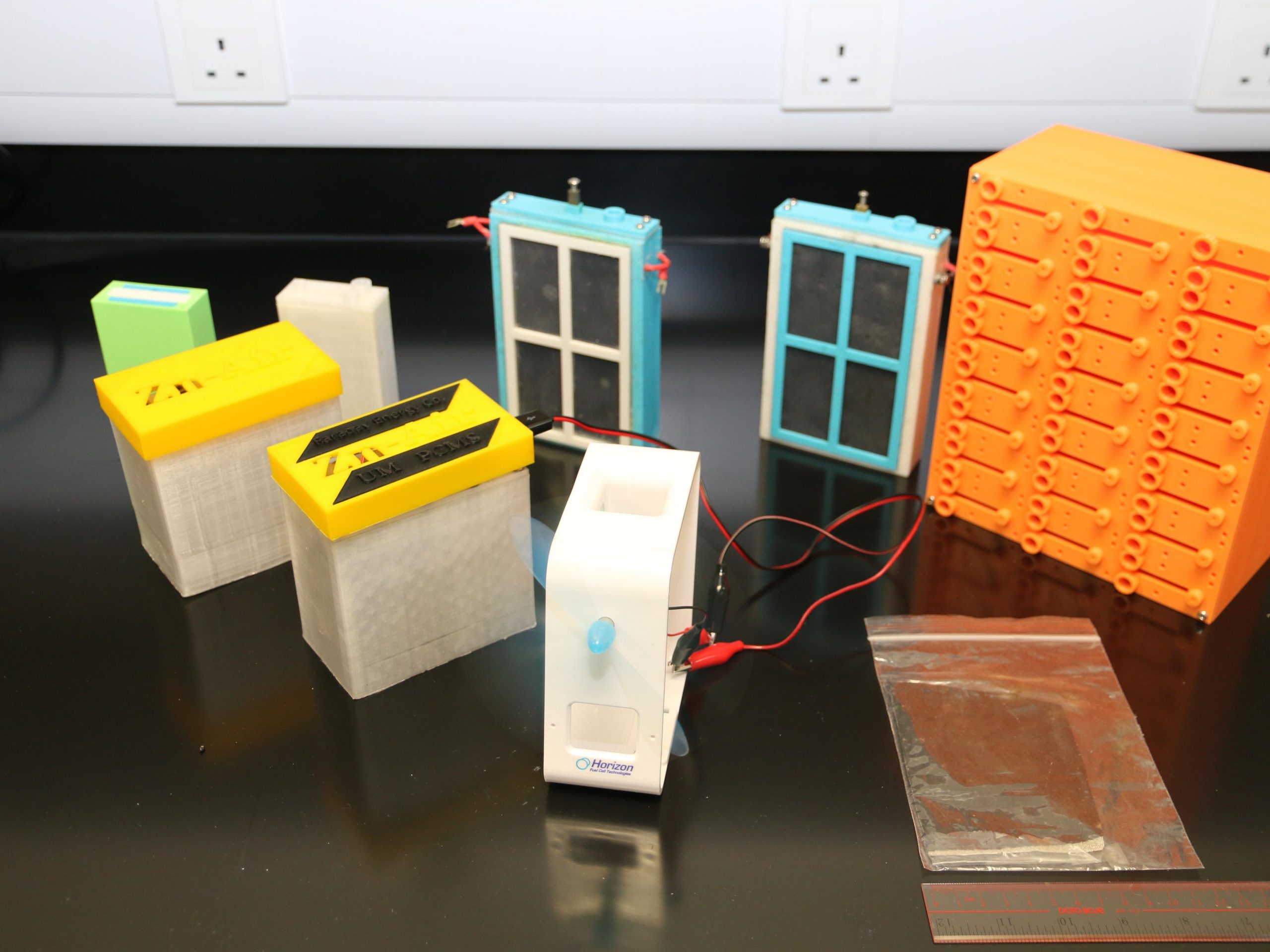
High‐performance zinc‐air batteries
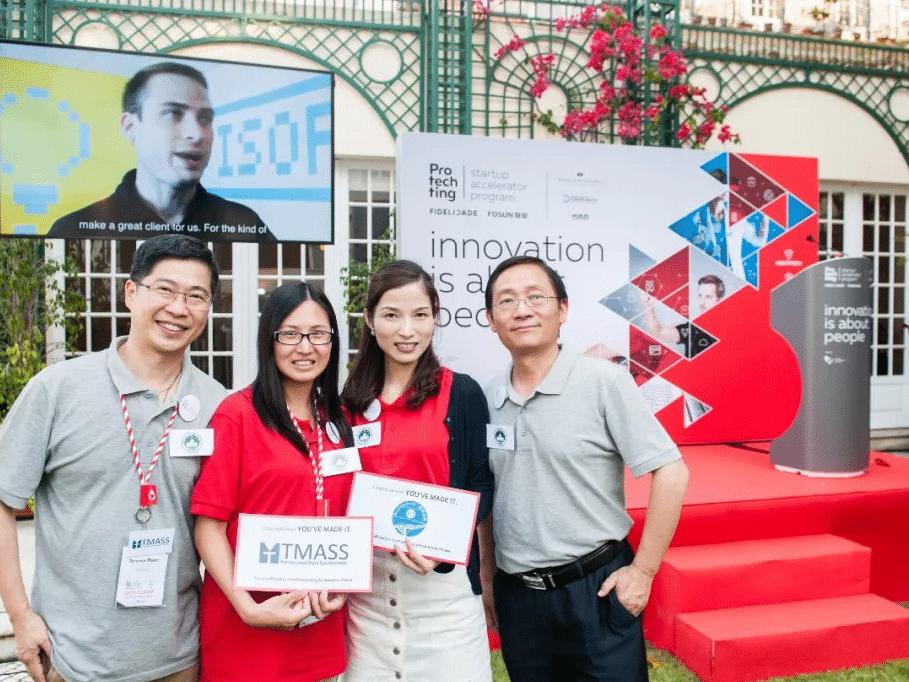
Prof Xu Renhe and Prof Poon Chuen Wai’s teams
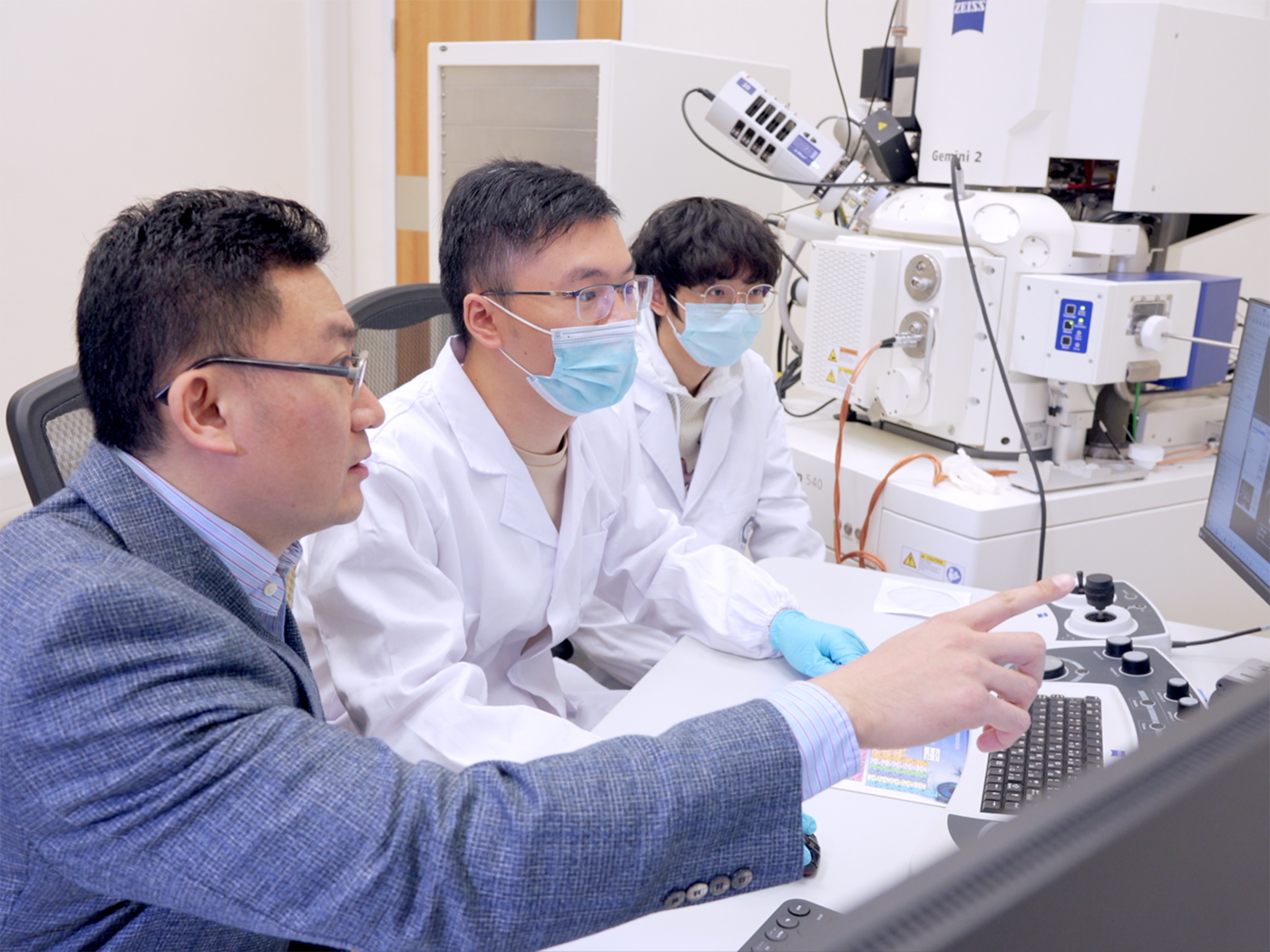
Prof Hui Kwun Nam and his team
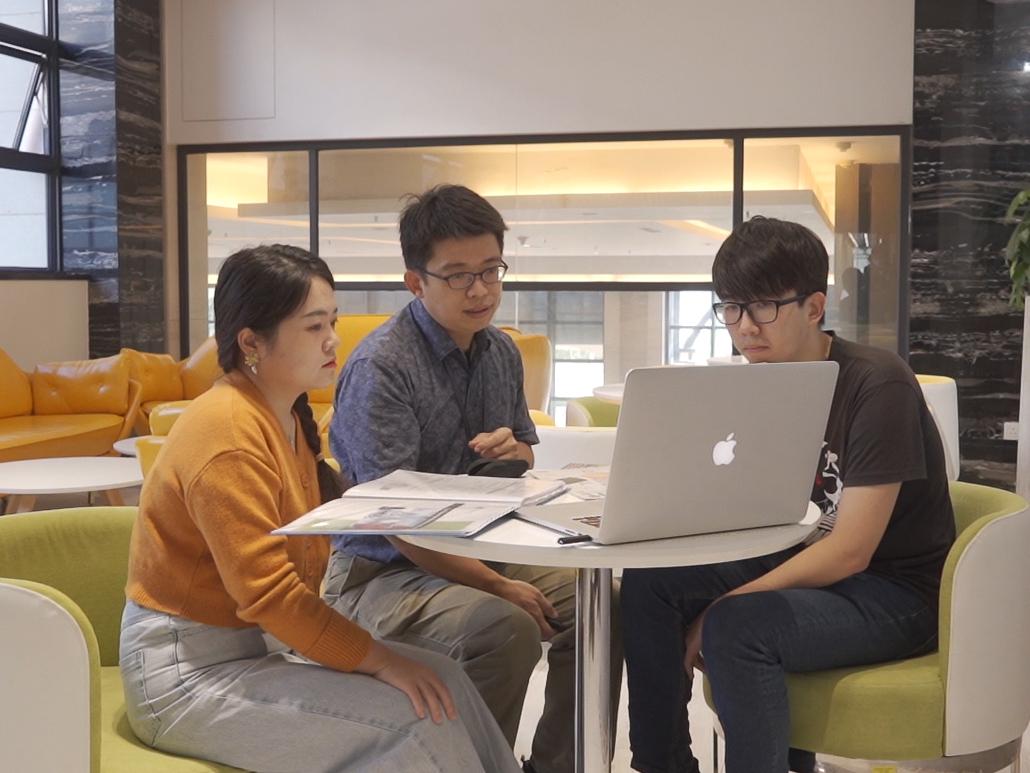
Prof Liu Tzu‐Ming and his team
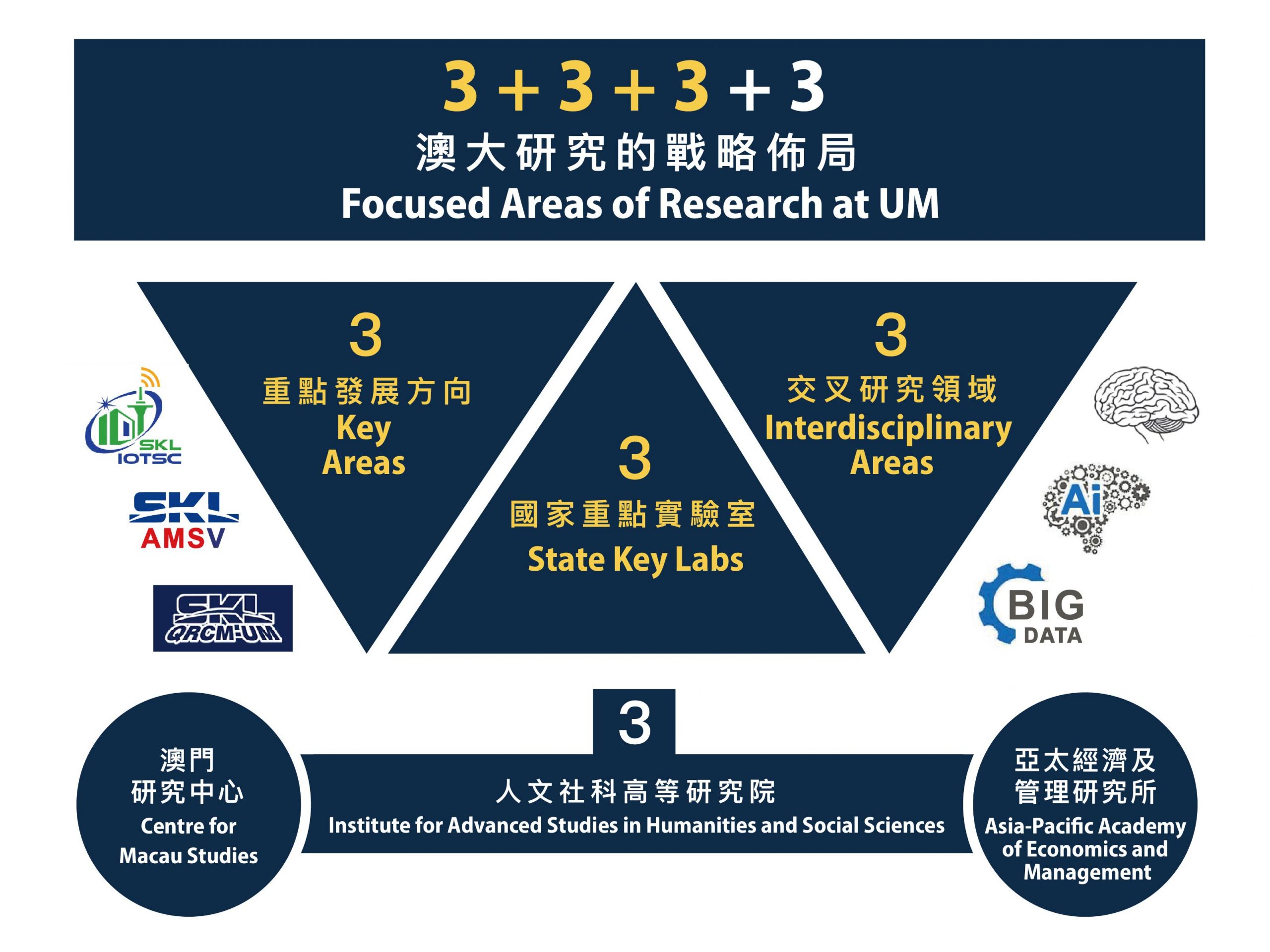
UM has formulated a ‘3+3+3+3’ research strategic research blueprint to encourage interdisciplinary collaboration
